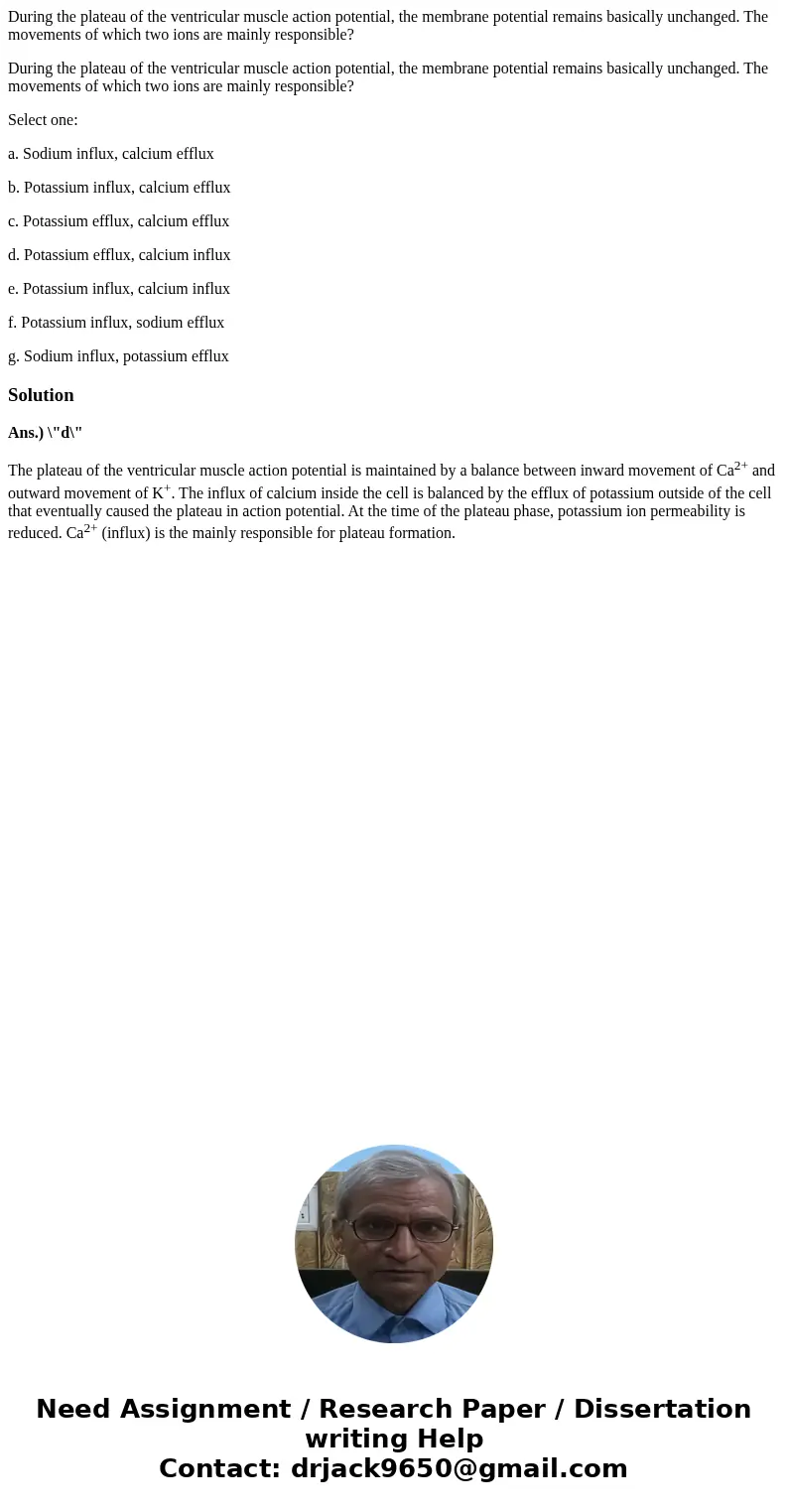During the plateau of the ventricular muscle action potentia
During the plateau of the ventricular muscle action potential, the membrane potential remains basically unchanged. The movements of which two ions are mainly responsible?
During the plateau of the ventricular muscle action potential, the membrane potential remains basically unchanged. The movements of which two ions are mainly responsible?
Select one:
a. Sodium influx, calcium efflux
b. Potassium influx, calcium efflux
c. Potassium efflux, calcium efflux
d. Potassium efflux, calcium influx
e. Potassium influx, calcium influx
f. Potassium influx, sodium efflux
g. Sodium influx, potassium efflux
Solution
Ans.) \"d\"
The plateau of the ventricular muscle action potential is maintained by a balance between inward movement of Ca2+ and outward movement of K+. The influx of calcium inside the cell is balanced by the efflux of potassium outside of the cell that eventually caused the plateau in action potential. At the time of the plateau phase, potassium ion permeability is reduced. Ca2+ (influx) is the mainly responsible for plateau formation.

 Homework Sourse
Homework Sourse